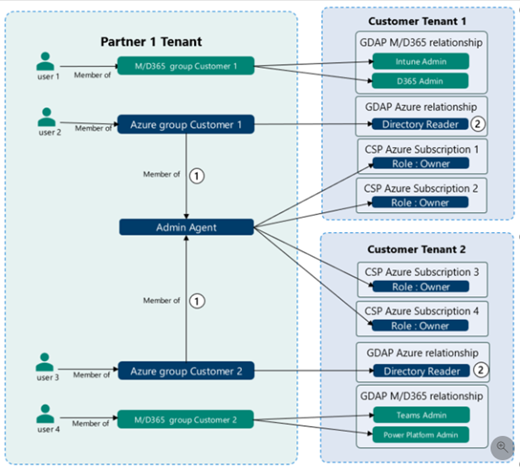WHAT'S HAPPENING: Microsoft is introducing an option to license Windows Server on a virtual core basis.
WHEN: Effective October 1, 2022
Microsoft has announced a change to the Windows Server licensing model.
An earlier blog post states:
“Today, Windows Server is licensed by physical core, which means customers must have access to the physical server hardware to ensure that they have enough Windows Server licenses to cover all physical cores in the machine. With the virtual core licensing option, customers can elect to license Windows Server by the number of virtual cores they are using in virtual machines, making Windows Server easier to license when virtualizing or outsourcing.”
The Microsoft Product Terms has now been updated to include the following wording:
Server Licenses (per core) – Licensing by Individual Virtual OSE
Available for subscription licenses or licenses with active Software Assurance only. All CALs used to access the software under this model must also be acquired as subscription licenses or have active Software Assurance.
Customer may use the server software in one Virtual OSE on the Licensed Server, provided it acquires sufficient Server licenses as described below.
The number of Licenses required equals the number of Virtual Cores in the Virtual OSE, subject to a minimum of 8 Licenses per Virtual OSE and 16 Licenses per Customer
Customer may reassign any of its Licenses to any of its Licensed Servers located within the same Server Farm as often as needed. Customer may also reassign these Licenses from one Server Farm to another, but not on a short-term basis (i.e., not within 90 days of the last assignment).
Subscription licenses or licenses with active Software Assurance only: When licensing by Virtual OSE, Customer may reassign any of its Licenses to any of its Licensed Servers located within the same Server Farm as often as needed. Customer may also reassign these Licenses from one Server Farm to another, but not on a short-term basis (i.e., not within 90 days of the last assignment).
WHAT'S HAPPENING: Microsoft is simplifying how customers can virtualize Windows 10 or Windows 11 with Microsoft 365
WHEN: Effective October 1, 2022
In the same announcement, Microsoft announced additional entitlements available for certain Microsoft 365 suites.
Any user with a Microsoft 365 F3, Microsoft 365 E3, or Microsoft 365 E5 license will be able to virtualize Windows 10 or Windows 11 on their own servers or on outsourcers’ servers (except Listed Providers – which are Alibaba, Amazon Web Services, Google, and Microsoft), regardless of whether the user’s primary device has a Qualifying Operating System (QOS)** — e.g., Windows 11 Pro — and without the need for any additional licenses.
Previously, Microsoft 365 users without a primary device with a QOS would have also had to acquire a VDA add-on license to virtualize Windows 10 or Windows 11. As of October 1, 2022, Microsoft has eliminated that requirement for Microsoft 365 F3, Microsoft 365 E3, and Microsoft 365 E5 users.
WHAT'S HAPPENING: Microsoft has introduced a new Flexible Virtualization benefit
WHEN: Effective October 1, 2022
Under the new Flexible Virtualization benefit, customers with Software Assurance (purchased through Volume Licensing) or subscription licenses (purchased through CSP) will be able to use their own licensed software to build and/or install solutions and run them on any cloud provider’s infrastructure (except Listed Providers – which are Alibaba, Amazon Web Services, Google, and Microsoft)— dedicated or shared.
Customers can work with partners in the Cloud Solution Provider program to get pre-built hosted desktop and server solutions and either bring their own license or get the license from the partner. A Microsoft Customer Agreement with the participating partner and proof of license will be required to run these hosted solutions.
WHAT'S HAPPENING: Applicable to CSP customers: Long View will be replacing CSP DAP access with GDAP
WHEN: October 2022
GDAP (granular delegated admin privileges) is a new feature released by Microsoft which allows CSP partners greater control when accessing their customers’ tenants. This security feature greatly reduces security risks for CSP partners and will allow us to adjust our access by removing DAP access and replacing it with a less privileged role. Later this month, Long View Systems will be replacing CSP DAP access with GDAP using an Azure AD role called Service Support administrator. This role will allow the CSP team to read the client tenant as well as open Microsoft Premier support tickets on their behalf.

GDAP provides partners with least-privileged access following the Zero Trust cybersecurity protocol. It lets partners configure granular and time-bound access to their customers' workloads in production and sandbox environments. This least-privileged access needs to be explicitly granted to partners by their customers.
Partners' access can be partitioned per customer. With GDAP, partners no longer have access to all customer tenants across Azure subscriptions through Admin agents by default. Instead, partners managing Azure are part of a separate security group, which is a member of the Admin agent group. This group grants owner role-based access control (RBAC) access on all Azure subscriptions for that customer. Partners managing Azure no longer receive the Global Admin role on their customer’s tenant but rather, receive lower permissions to read a customer directory by default.
If you have any questions about GDAP, please contact [email protected].